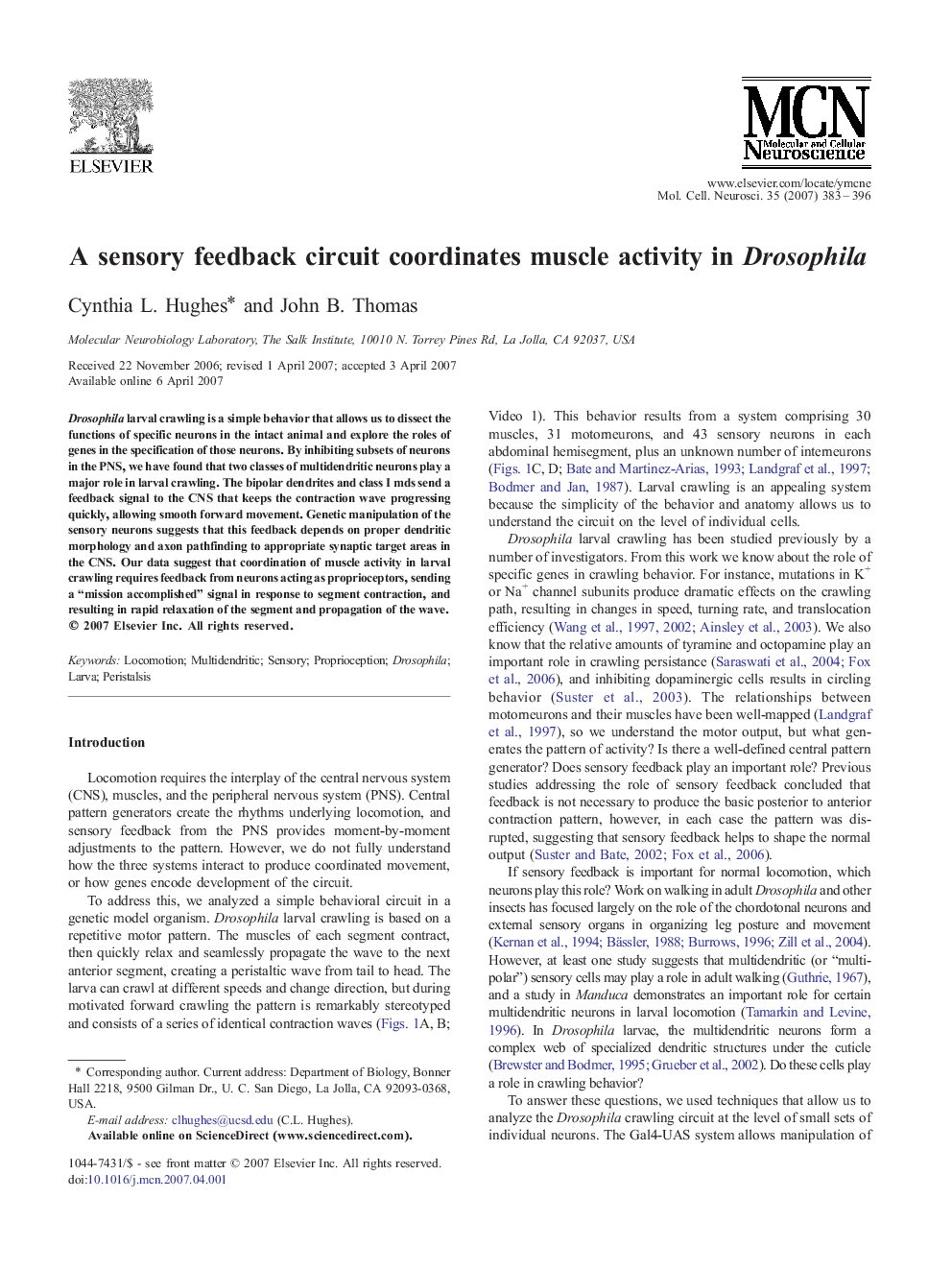| Article ID | Journal | Published Year | Pages | File Type |
|---|---|---|---|---|
| 2199413 | Molecular and Cellular Neuroscience | 2007 | 14 Pages |
Drosophila larval crawling is a simple behavior that allows us to dissect the functions of specific neurons in the intact animal and explore the roles of genes in the specification of those neurons. By inhibiting subsets of neurons in the PNS, we have found that two classes of multidendritic neurons play a major role in larval crawling. The bipolar dendrites and class I mds send a feedback signal to the CNS that keeps the contraction wave progressing quickly, allowing smooth forward movement. Genetic manipulation of the sensory neurons suggests that this feedback depends on proper dendritic morphology and axon pathfinding to appropriate synaptic target areas in the CNS. Our data suggest that coordination of muscle activity in larval crawling requires feedback from neurons acting as proprioceptors, sending a “mission accomplished” signal in response to segment contraction, and resulting in rapid relaxation of the segment and propagation of the wave.
